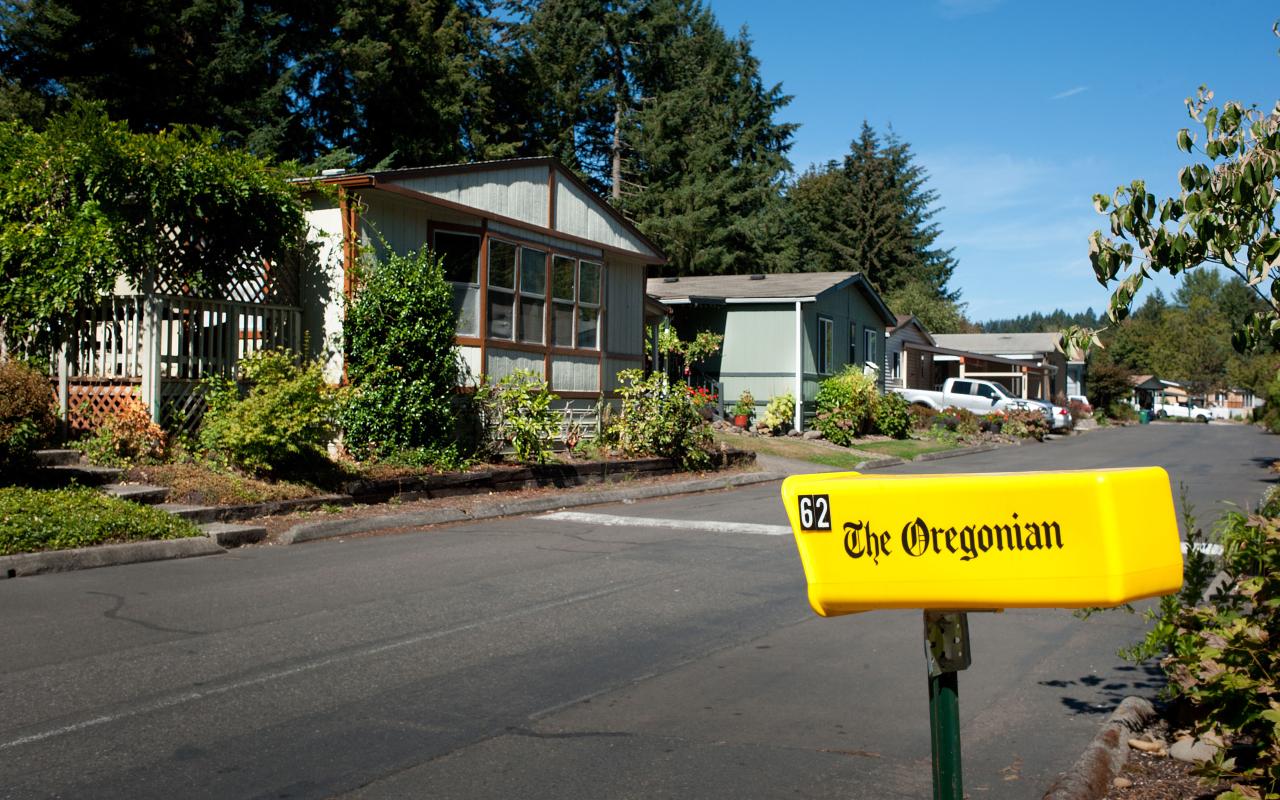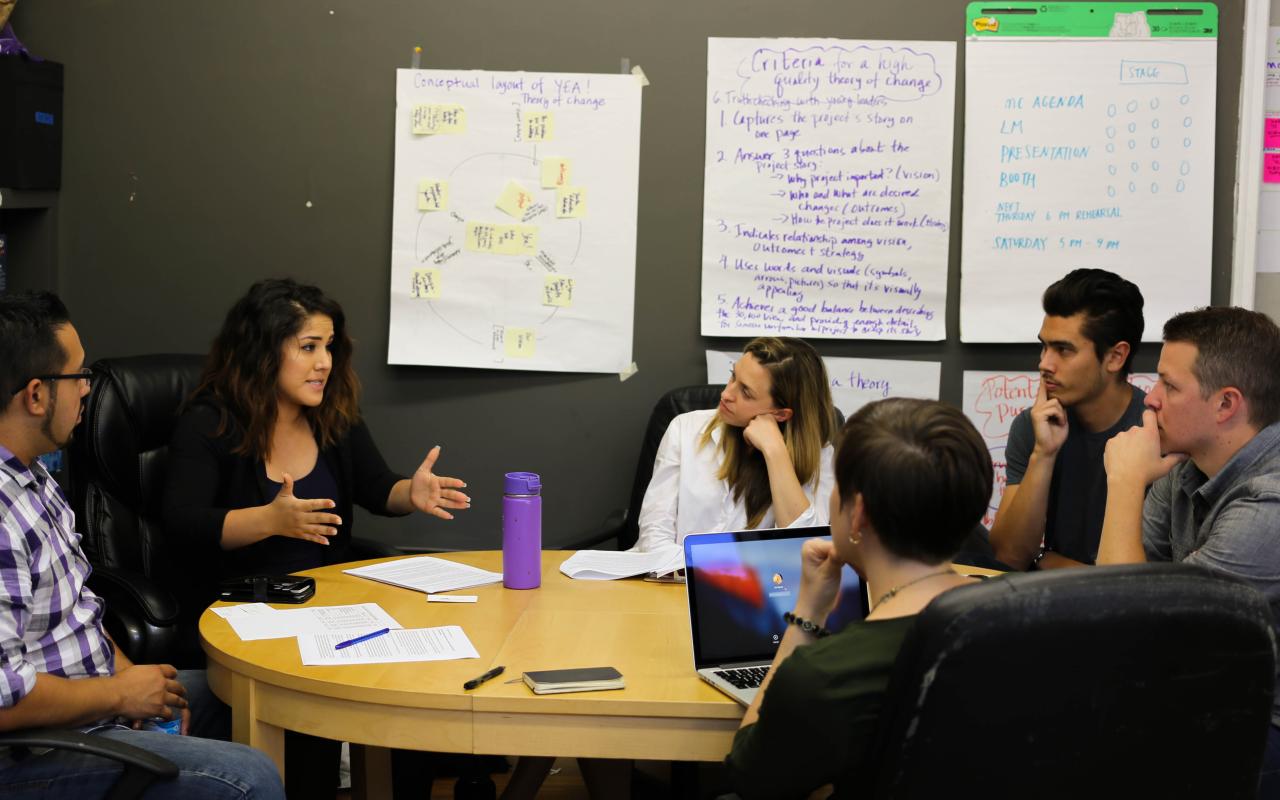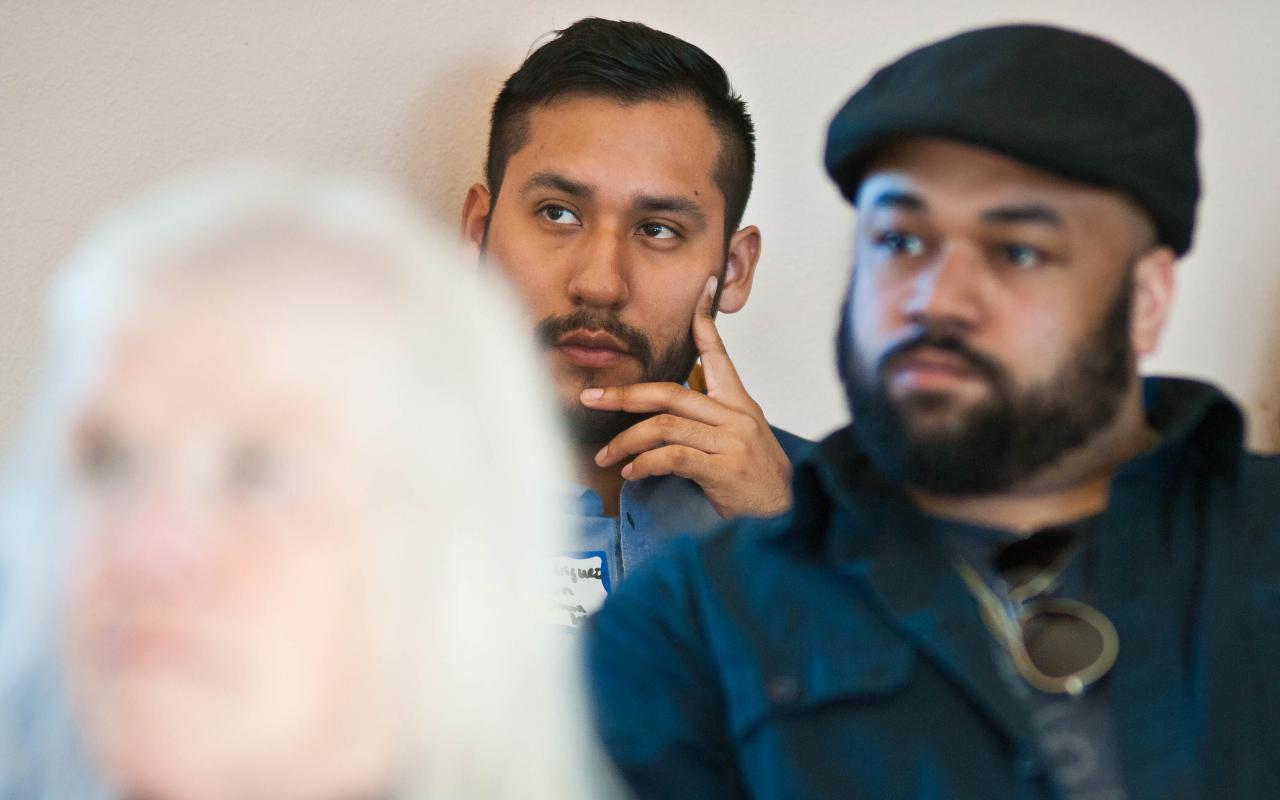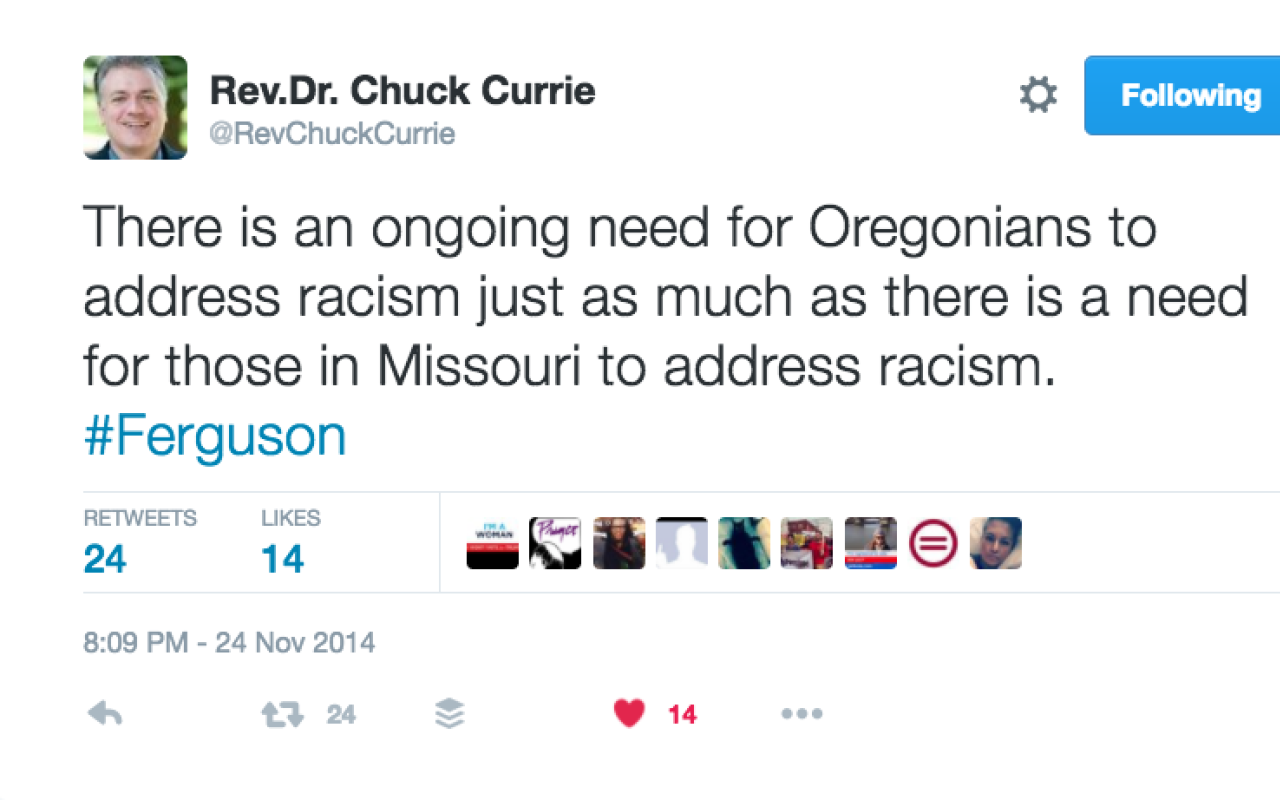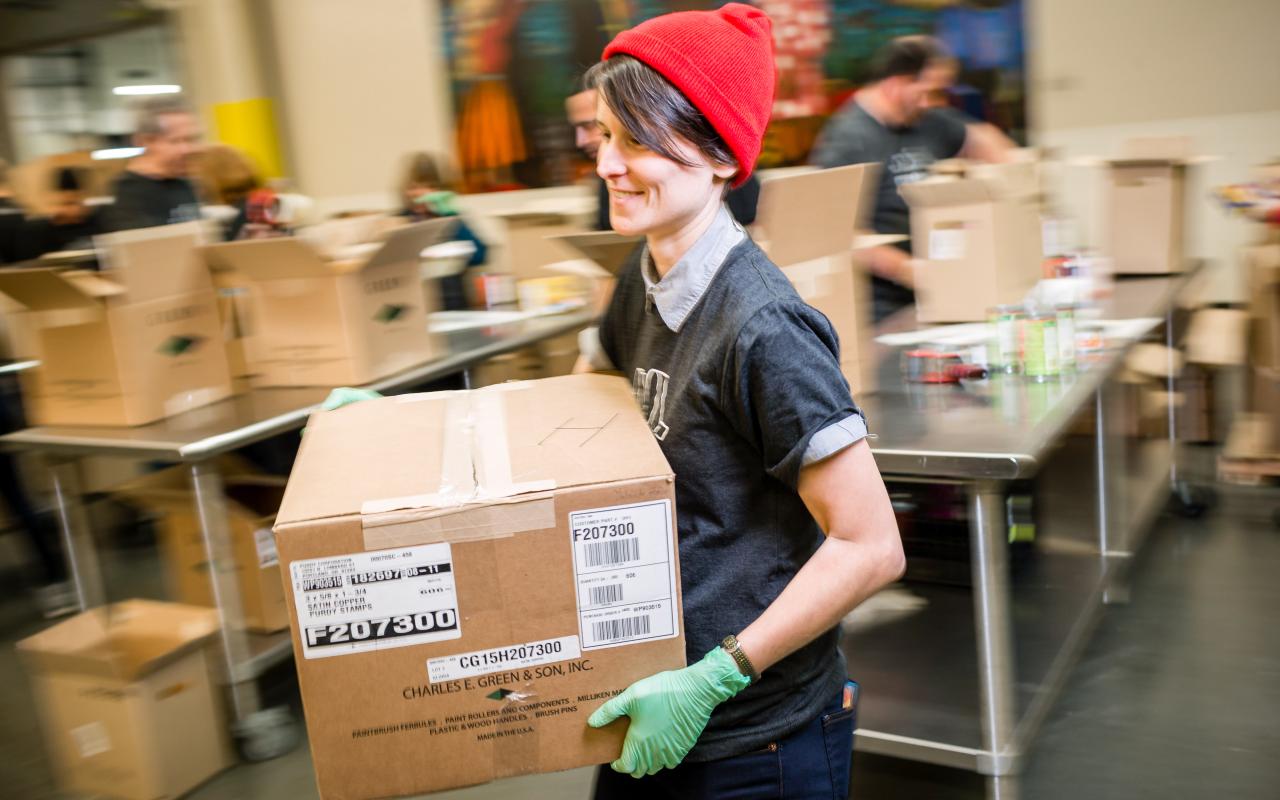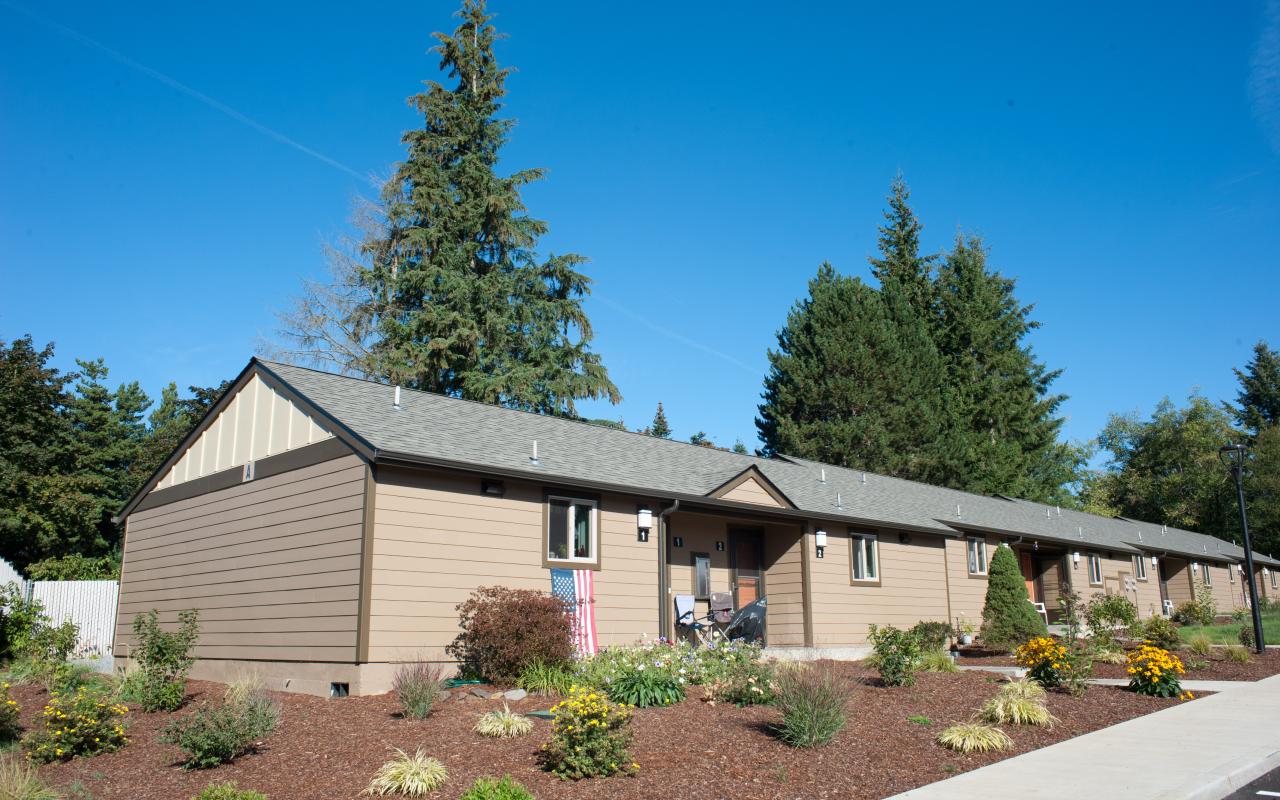A Commitment to Rural Housing Pays Off
Housing issues in rural Oregon have always been central to Meyer’s Affordable Housing Initiative. Both in the initial AHI launched in 2007 and in the second phase (underway since 2013), Meyer has responded to emphatic and persuasive testimony from stakeholders around the state that rural Oregon has distinct and urgent needs around affordable housing.
In particular, our trustees were moved by the housing needs of Oregonians living in manufactured housing,* both because of their vulnerability to dislocation and because of the huge numbers of Oregonians living in older, substandard homes with few resources to address housing issues impacting their health, utility bills and basic housing stability.
Since 2007, Meyer has supported a network of amazing partners focused on these issues, around two broad categories: preventing displacement by helping residents form cooperatives to buy their own parks and identifying ways to leverage a variety of resources to improve the condition of manufactured homes around the state.
Resident-owned cooperatives
Across Oregon, rising land values are putting some manufactured home parks in the cross hairs of redevelopment. Residents of investor-owned parks are vulnerable to rents rising beyond their means, even as some owners may not be keeping up with basic infrastructure repairs and other ownership responsibilities.
Oregon has become a nationally recognized leader in the resident-owned cooperative movement, largely thanks to the pioneering work of CASA of Oregon, based in Sherwood. Owners of manufactured homes in a typical privately owned park are vulnerable to losing their homes and even potentially slipping into homelessness if the owner decides to close the park or increase space rents beyond what residents can afford.
It might appear that the homeowners could simply move their homes, but in many cases that’s not a real possibility. It may cost as much as $10,000 to move and install a home in a new location — and only if one is available (and often parks won’t accept an older home even if the owner can afford to move it). It’s not surprising that homeowners often will walk away from a home if they can’t afford to move or can’t find a park that will accept it.
More than a decade ago, CASA set about developing an alternative that provides long-term stability and affordability, helping the residents of a park form a cooperative to pool resources and get help to buy their park, make necessary improvements and control costs going forward. It’s complex, difficult work and doesn’t work for every park, but when it does come together, it provides more than housing stability — it preserves often irreplaceable communities where people have lived for many years.
With support from Meyer, Network for Oregon Affordable Housing, the state of Oregon and other partners, CASA has assisted the formation of nine manufactured home co-ops around the state, covering nearly 600 mostly low-income households.
CASA has also been instrumental in important policy initiatives at the state level to help protect the interests of park residents, including legislation requiring notification one year before a park closure, relocation assistance to residents of parks being closed and even right-of-first-refusal allowing residents an opportunity to buy their park before any sale.
Another approach to helping maintain housing stability and affordability in manufactured home parks is nonprofit ownership. On this front, St. Vincent De Paul of Lane County and NeighborWorks Umpqua in Douglas County have stepped in to purchase and manage parks in their communities to help improve the physical infrastructure, stabilize rents and address other issues in parks, often after years of neglect by prior owners.
Addressing substandard manufactured housing
Although there is a definite stigma attached to manufactured homes, advances in manufacturing and federal codes regulating their production have led to dramatic improvements in the quality, durability and energy efficiency of manufactured homes.
Unfortunately, many Oregonians are living in homes built before those changes and have no choice but to tolerate leaking roofs, drafty windows and, in some cases, structural, plumbing or electrical issues that are truly unsafe. When homeowners struggle to manage the upkeep of their aging homes, they may turn to nonprofits such as NeighborWorks Umpqua, St. Vincent De Paul of Lane County and sometimes local Habitat for Humanity chapters to help with basic repairs or even replacement of older homes.
Cost-effective replacement of homes has long been a key priority for advocates working with owners of older homes. Meyer supported an effort led by NeighborWorks Umpqua on the southern Oregon coast to pilot home replacements leveraging energy savings. And under the AHI, Meyer also seeded a research project including NeighborWorks Umpqua, St. Vincent De Paul of Lane County, CASA and Network for Oregon Affordable Housing to better understand challenges and opportunities around replacement.
The challenges are formidable. A clear path to replacing older, seriously substandard homes has been obstructed by some foreseeable issues (the high total cost of replacement and a lack of dedicated subsidies for this purpose) and some less obvious ones (owners’ attachment to their homes and strong resistance to taking on debt). But there is hope on the horizon. The Rural Development branch of the U.S. Department of Agriculture is exploring ways to open its existing housing programs to manufactured home buyers and owners, and Energy Trust of Oregon is leading an effort to leverage the energy savings from replacing older homes, which can have shockingly high utility costs, with new, energy-efficient homes. HUD’s Oregon office has been actively engaged in manufactured home efforts around the state, and Oregon Housing and Community Services remains a committed and vitally important partner. We are happy to continue to engage with these partners and believe that solutions will be found soon that will retire many of the worst homes around the state.
In the meantime, we have continued to explore cost-effective repairs of older manufactured homes, drawing on the grants described above and on a recent Meyer-commissioned study of the work of Habitat for Humanity of Benton County on repairing manufactured homes under its Home Repair Initiative. Repairing manufactured homes raises its own thicket of issues, but we’ve become convinced it’s an important tool in the affordable housing toolbox.
Although putting several thousand dollars into an older structure that probably has negative value as a financial asset may not look like a good investment, it makes sense to see this through the lens of homelessness prevention. Talking with partners around the state convinced us that repair can be a cost-effective way to help people remain in housing they can afford and prevent a slide into a much worse situation. To that end, we recently launched a new Request for Proposals for grants to support repair programs (available here — the application deadline is 5 p.m. December 5).
Equity in the manufactured home context
Not all park residents are especially low-income, but there is a strong equity dimension to this work, especially in rural parts of the state where parks may represent a large share of the existing housing affordable to very low-income people. Even if Oregon manufactured home park residents in general may be less diverse in terms of race and ethnicity than the state as a whole (NeighborWorks Umpqua and Portland State University are currently surveying park residents around the state, which will give us a clearer sense of these demographics), there are opportunities to target Meyer’s support to communities that need it most, in line with Meyer’s commitment to equity as a core value. We will continue to foreground equity in our work with partners on these issues.
Next up
Two other projects recently supported by Meyer deserve mention here: Innovative Housing Inc. (IHI), a Portland-based nonprofit, received a pre-development grant under our “Innovation in Affordable Housing Design, Finance and Construction” RFP early this year as part of our efforts to support pilots around lowering the cost of affordable housing development. IHI’s proposed innovation is really a variation on the familiar manufactured home park: in their case, brand-new homes in a community developed and managed by Innovative Housing Inc. as affordable rental housing. We look forward to seeing what lessons can be drawn from the effort to build a new park intentionally as permanently affordable housing.
And just this fall, Network for Oregon Affordable Housing was awarded a two-year Meyer grant to support a statewide steering group including all the public, private and nonprofit partners wrestling with supporting long-term affordability and housing stability in manufactured home parks. We are pleased to see them take on this important convening and coordinating role and will be interested in their progress identifying opportunities, resources and supportive policies to maintain manufactured homes as an affordable housing option for Oregonians.
Resources
What do we mean by "manufactured housing?”
Factory-built homes, commonly referred to as "mobile homes" in the past. (Corporation for Enterprise Development has a great fact sheet here).
Manufactured homes represent an important part of non-subsidized or "naturally occurring" affordable housing in Oregon, with over 65,000 homes spread across the state, both in the state’s 1,300 manufactured home parks and on privately owned land.
— Michael
